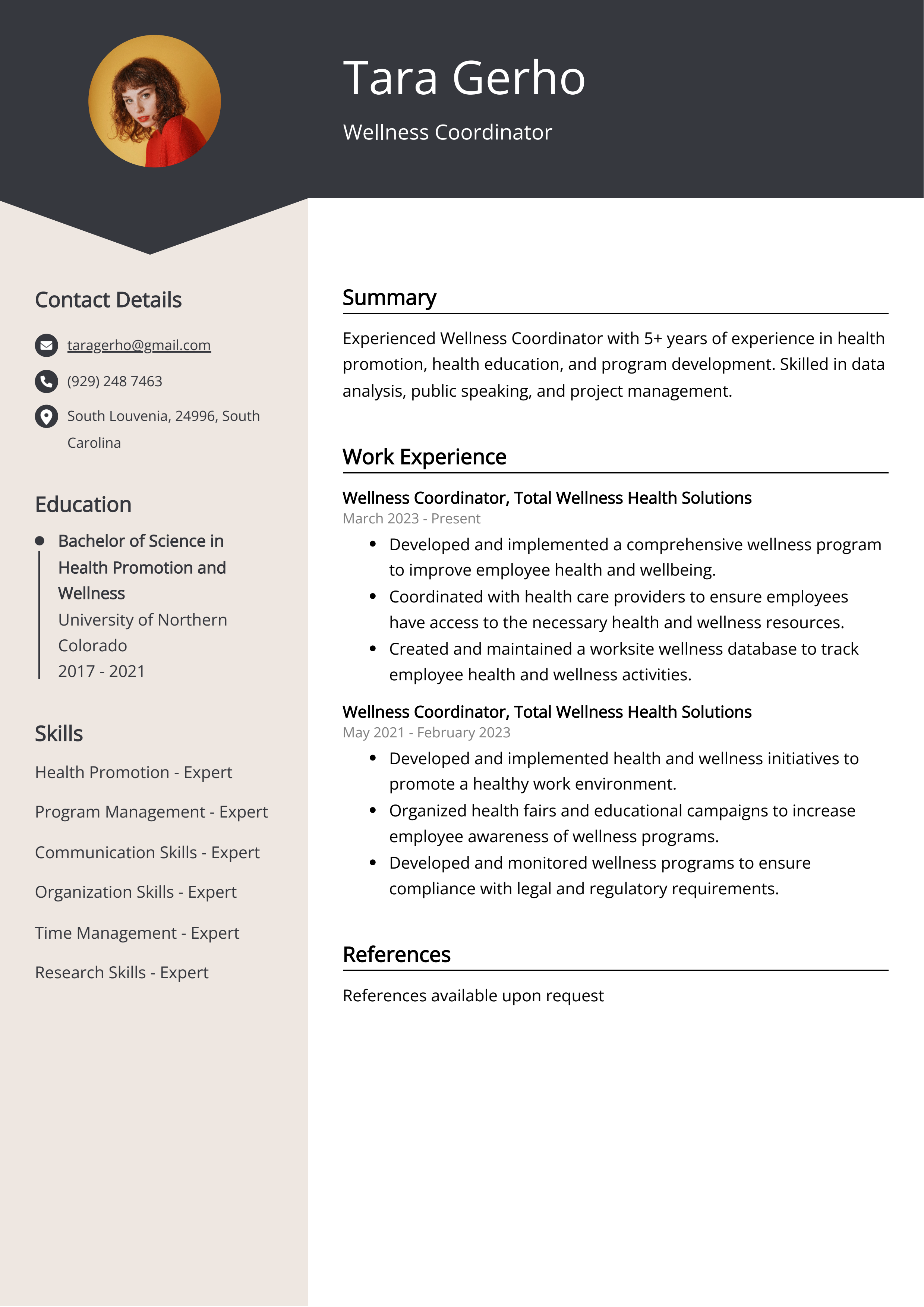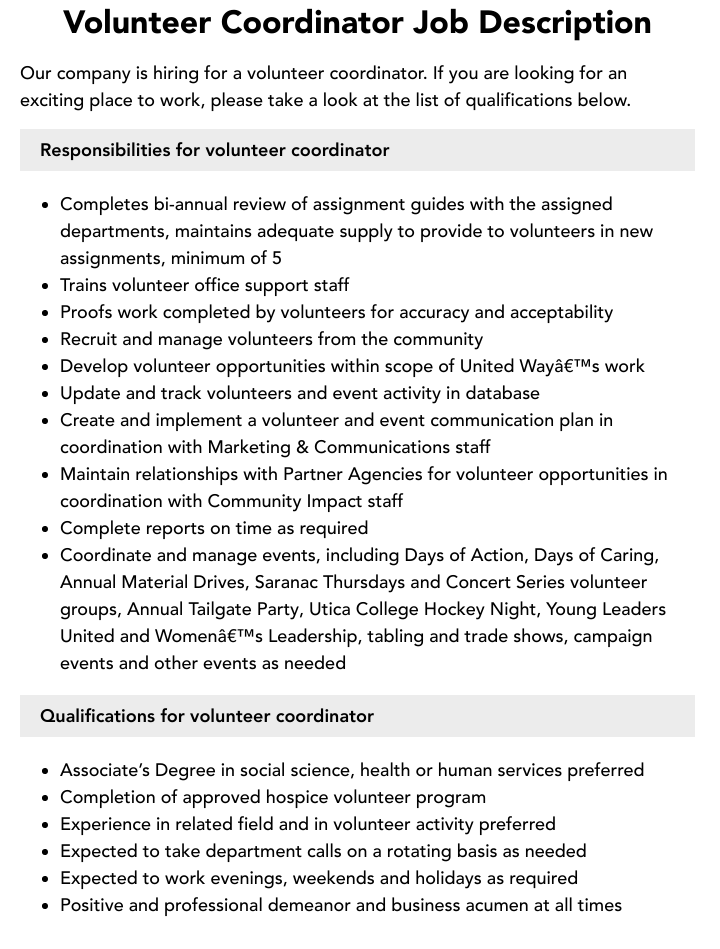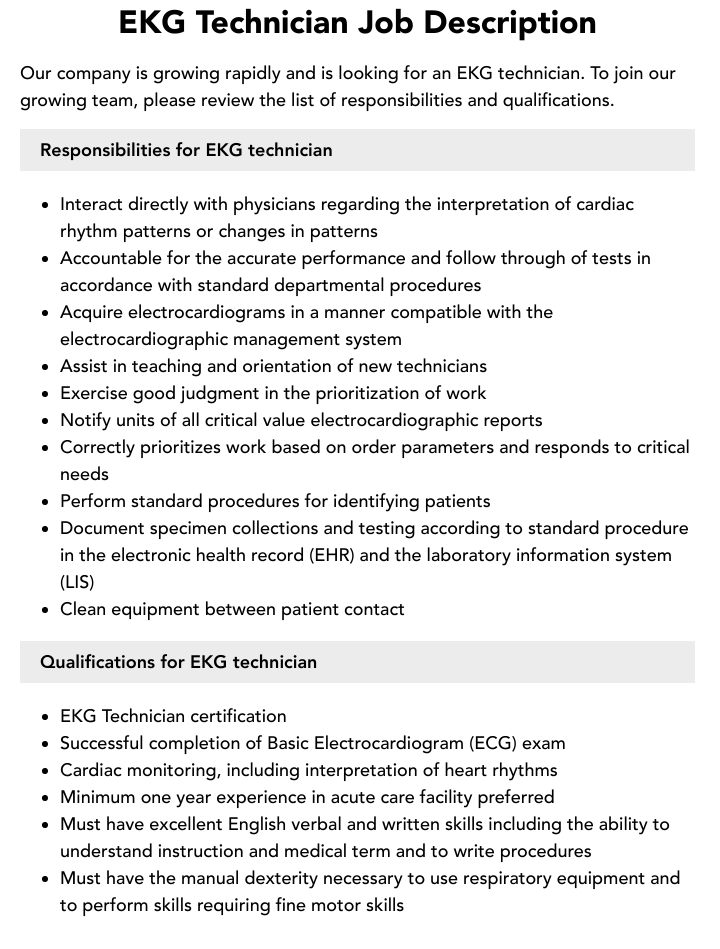
A wellness coordinator job description outlines the roles and responsibilities of an individual responsible for promoting and maintaining the well-being of employees within an organization. They typically develop, implement, and manage wellness programs, activities, and initiatives designed to improve the health, well-being, and productivity of the workforce.
Wellness coordinators play a crucial role in creating a positive and healthy work environment by promoting healthy lifestyles, preventing illness, and reducing healthcare costs. They collaborate with various stakeholders, including employees, management, and healthcare providers, to ensure that wellness programs are tailored to the organization’s specific needs and goals.
The main article topics will delve deeper into the specific tasks, skills, and qualifications required for a successful wellness coordinator, as well as the broader impact of workplace wellness programs on employee health, morale, and organizational performance.
1. Program Development
Program development is a crucial aspect of a wellness coordinator job description. It involves the creation and implementation of wellness programs that are specifically designed to meet the unique needs and goals of an organization. This requires a thorough understanding of the organization’s culture, workforce demographics, and health risks. By tailoring wellness programs to the specific needs of the organization, wellness coordinators can ensure that they are effective and engaging for employees.
For example, an organization with a large population of employees who work sedentary jobs may benefit from a wellness program that includes regular physical activity breaks and ergonomic workstation assessments. On the other hand, an organization with a high-stress work environment may benefit from a wellness program that includes stress management workshops and mindfulness training.
Program development is an ongoing process that requires regular evaluation and refinement. Wellness coordinators must be able to track and analyze data to measure the effectiveness of their programs and identify areas for improvement. By continuously improving their programs, wellness coordinators can ensure that they are meeting the changing needs of their organization and employees.
In summary, program development is a vital component of a wellness coordinator job description. By creating and implementing wellness programs that are tailored to the specific needs and goals of an organization, wellness coordinators can help to improve the health, well-being, and productivity of employees.
2. Health Promotion
Health promotion is an essential component of a wellness coordinator job description. It involves promoting healthy lifestyles and behaviors among employees through education, activities, and resources. This can include a wide range of initiatives, such as:
- Wellness workshops and seminars: These can cover a variety of topics, such as nutrition, stress management, and physical activity.
- Health screenings and assessments: These can help employees to identify and manage their health risks.
- Access to fitness facilities and resources: This can encourage employees to stay active and healthy.
- Healthy food options in the workplace: This can make it easier for employees to make healthy choices.
By promoting healthy lifestyles and behaviors, wellness coordinators can help to improve the health, well-being, and productivity of employees. This can lead to reduced absenteeism and presenteeism, lower healthcare costs, and improved morale. In addition, health promotion can help to create a more positive and supportive work environment.
Here are some specific examples of how health promotion can be integrated into a wellness coordinator job description:
- Developing and delivering a health education campaign on the importance of healthy eating.
- Organizing a company-wide walking challenge to encourage employees to get more physical activity.
- Negotiating discounts on gym memberships or fitness classes for employees.
- Providing healthy snacks and beverages in the workplace.
By taking these steps, wellness coordinators can help to create a healthier and more productive workplace.
3. Data Analysis
Data analysis is an essential component of a wellness coordinator job description. It involves tracking and analyzing data to measure the effectiveness of wellness programs and identify areas for improvement. This allows wellness coordinators to make data-driven decisions about their programs and ensure that they are meeting the needs of employees. There are four key facets of data analysis in the context of wellness coordinator job descriptions:
- Tracking participation rates: This helps wellness coordinators to understand how many employees are participating in their programs and which programs are most popular.
- Measuring health outcomes: This helps wellness coordinators to assess the impact of their programs on employee health. For example, they may track changes in body mass index, blood pressure, or cholesterol levels.
- Identifying trends: This helps wellness coordinators to identify patterns and trends in employee health data. For example, they may identify that a certain group of employees is at high risk for a particular health condition.
- Evaluating program effectiveness: This helps wellness coordinators to determine whether their programs are achieving their desired outcomes. For example, they may compare the health outcomes of employees who participate in their programs to the health outcomes of employees who do not.
By tracking and analyzing data, wellness coordinators can gain valuable insights into the effectiveness of their programs. This information can then be used to make improvements to the programs and ensure that they are meeting the needs of employees.
4. Collaboration
In the context of a wellness coordinator job description, collaboration is essential for developing and implementing effective workplace wellness programs. Wellness coordinators must work closely with a variety of stakeholders, including employees, management, and healthcare providers, to ensure that their programs are tailored to the specific needs of the organization and its employees.
- Collaboration with employees: Wellness coordinators must involve employees in the planning and implementation of wellness programs to ensure that the programs are relevant and engaging. This may involve conducting needs assessments, surveys, and focus groups to gather input from employees.
- Collaboration with management: Wellness coordinators must secure the support of management to ensure that wellness programs have the necessary resources and support to be successful. This may involve presenting data on the potential benefits of wellness programs and working with management to develop policies that support employee health and well-being.
- Collaboration with healthcare providers: Wellness coordinators may collaborate with healthcare providers to offer on-site health screenings, flu shots, and other health services. They may also work with healthcare providers to develop educational materials on health topics and to provide referrals for employees who need additional support.
By collaborating with a variety of stakeholders, wellness coordinators can develop and implement comprehensive workplace wellness programs that meet the needs of the organization and its employees. This can lead to improved employee health and well-being, reduced healthcare costs, and improved productivity.
FAQs on Wellness Coordinator Job Description
This section provides answers to frequently asked questions about wellness coordinator job descriptions, offering valuable insights into the role and its responsibilities.
Question 1: What are the primary responsibilities of a wellness coordinator?
Answer: Wellness coordinators are responsible for developing, implementing, and managing wellness programs within an organization. They promote healthy lifestyles, prevent illness, and reduce healthcare costs by collaborating with employees, management, and healthcare providers.
Question 2: What skills and qualifications are required for a wellness coordinator role?
Answer: Successful wellness coordinators typically possess a bachelor’s degree in public health, health promotion, or a related field, along with experience in program development, health education, and data analysis. Strong communication, interpersonal, and organizational skills are also essential.
Question 3: How does a wellness coordinator contribute to employee well-being?
Answer: Wellness coordinators play a crucial role in improving employee health and well-being by providing access to health screenings, promoting healthy behaviors, and reducing stress. They create a supportive work environment that fosters employee engagement and productivity.
Question 4: How does a wellness coordinator measure the effectiveness of their programs?
Answer: Wellness coordinators track and analyze data to assess the impact of their programs on employee health outcomes. They use surveys, health screenings, and other methods to gather data and identify areas for improvement.
Question 5: How does a wellness coordinator collaborate with other stakeholders?
Answer: Wellness coordinators collaborate with employees, management, and healthcare providers to ensure that wellness programs align with organizational goals and employee needs. They build relationships and partnerships to enhance the delivery and impact of their programs.
Question 6: What is the future outlook for wellness coordinator roles?
Answer: The demand for wellness coordinators is expected to grow as organizations prioritize employee health and well-being. With the increasing focus on preventive healthcare and chronic disease management, wellness coordinators will continue to play a vital role in creating healthier and more productive work environments.
These FAQs provide a comprehensive understanding of the wellness coordinator job description, highlighting the importance of this role in promoting employee well-being and organizational success.
Conclusion: Wellness coordinators are essential to the health and well-being of employees and organizations. Their expertise in program development, health promotion, data analysis, and collaboration enables them to create and implement effective wellness initiatives that improve employee health, reduce healthcare costs, and enhance organizational performance.
Transition to the Next Section: The following section will explore the key responsibilities and skills required for wellness coordinators in more detail.
Tips for Writing a Wellness Coordinator Job Description
A well-written wellness coordinator job description is essential for attracting and hiring qualified candidates. Here are some tips to help you create a job description that will get results:
1. Start with a strong job title. The job title should accurately reflect the responsibilities of the position and be appealing to potential candidates. For example, “Wellness Coordinator” or “Employee Wellness Manager” are both strong job titles.
2. Include a clear and concise summary of the position. The summary should provide a brief overview of the role, including the primary responsibilities and qualifications. For example, “The Wellness Coordinator is responsible for developing, implementing, and managing wellness programs that promote employee health and well-being.”
3. List the specific responsibilities of the position. This section should provide a detailed list of the tasks and duties that the Wellness Coordinator will be responsible for. For example, “Responsibilities include: developing and implementing wellness programs, providing health education to employees, tracking and analyzing data, and collaborating with other stakeholders.”
4. Include the required qualifications for the position. This section should list the minimum qualifications required for the position, such as education, experience, and skills. For example, “Qualifications include: a bachelor’s degree in public health, health promotion, or a related field; 3+ years of experience in program development and implementation; and strong communication and interpersonal skills.”
5. Describe the work environment and culture. This section should provide a brief overview of the work environment and culture of the organization. For example, “The Wellness Coordinator will work in a fast-paced and dynamic environment with a team of dedicated professionals. The organization values employee health and well-being and is committed to providing a supportive and healthy work environment.”
6. Include a salary range. This section should provide a salary range for the position. For example, “The salary range for this position is $50,000 – $75,000 per year.”
7. Proofread carefully. Before posting the job description, proofread it carefully for any errors in grammar or spelling. A well-written job description will make a good impression on potential candidates and help you attract the best talent.
Summary: By following these tips, you can create a well-written wellness coordinator job description that will help you attract and hire qualified candidates.
Transition to the Article’s Conclusion: These tips will help you write a job description that is clear, concise, and informative. By following these tips, you can increase your chances of attracting and hiring the best candidates for your organization.


